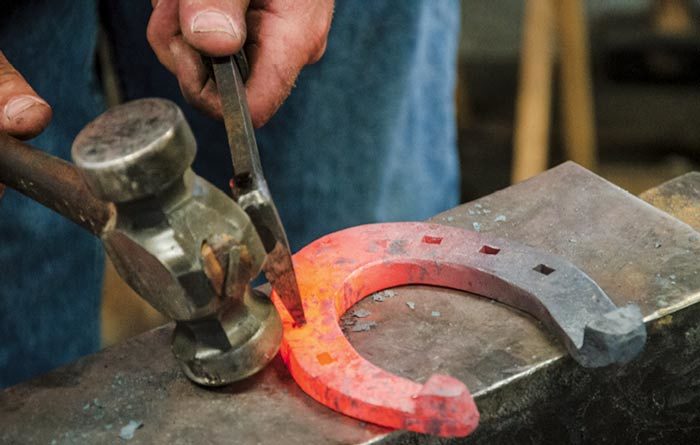American Farriers Journal
American Farriers Journal is the “hands-on” magazine for professional farriers, equine veterinarians and horse care product and service buyers.

Whether you’re forging a horseshoe from bar stock or modifying a factory-made shoe, the nail holes you punch are critical. The holes help determine whether the nails hold until the next shoeing and, when necessary, avoid flaws in a less-than-perfect hoof.
Two farriers offer their advice for punching nail holes to maximize effectiveness while minimizing effort. Chris Gregory is the owner/operator of the Heartland Horseshoeing School in Lamar, Mo., and a well-known lecturer and an examiner for the Farrier’s International Testing System (FITS), which tests shoers around the world. John Voigt of Carbondale, Ill., is an examiner for the American Farrier’s Association certification program. He is marking his 50th year as a shoer and has worked with a wide range of horse breeds — 18 at last count.
High-quality nail holes require proper equipment, which can vary with each farrier’s technique and preference.
Voigt begins with a forepunch, which makes the hole for the head of the nail, followed by a drift (sometimes called a stem punch), which he describes as a dull pritchel shaped like the neck of the nail just below the head, and finally a pritchel to punch the nail hole through the shoe.
Voigt notes that many farriers don’t use a drift.
…